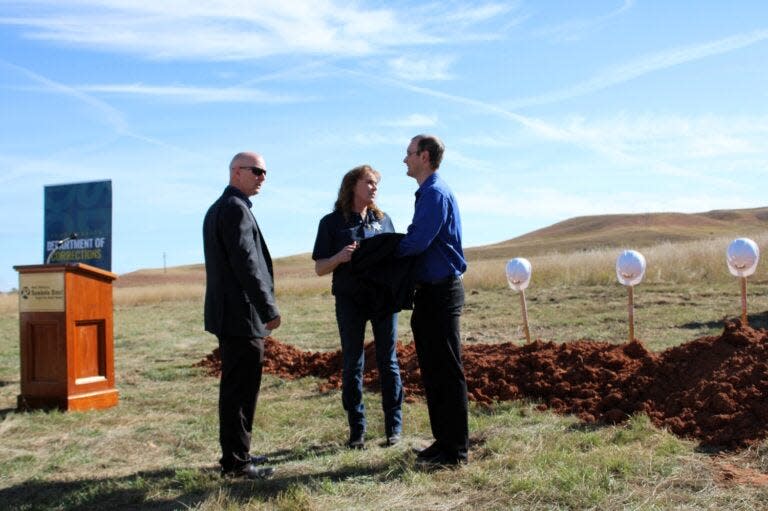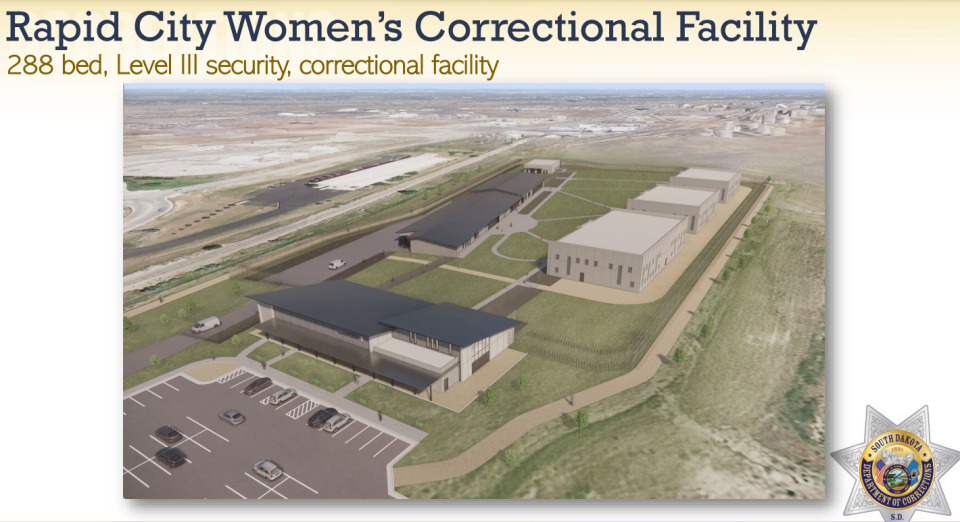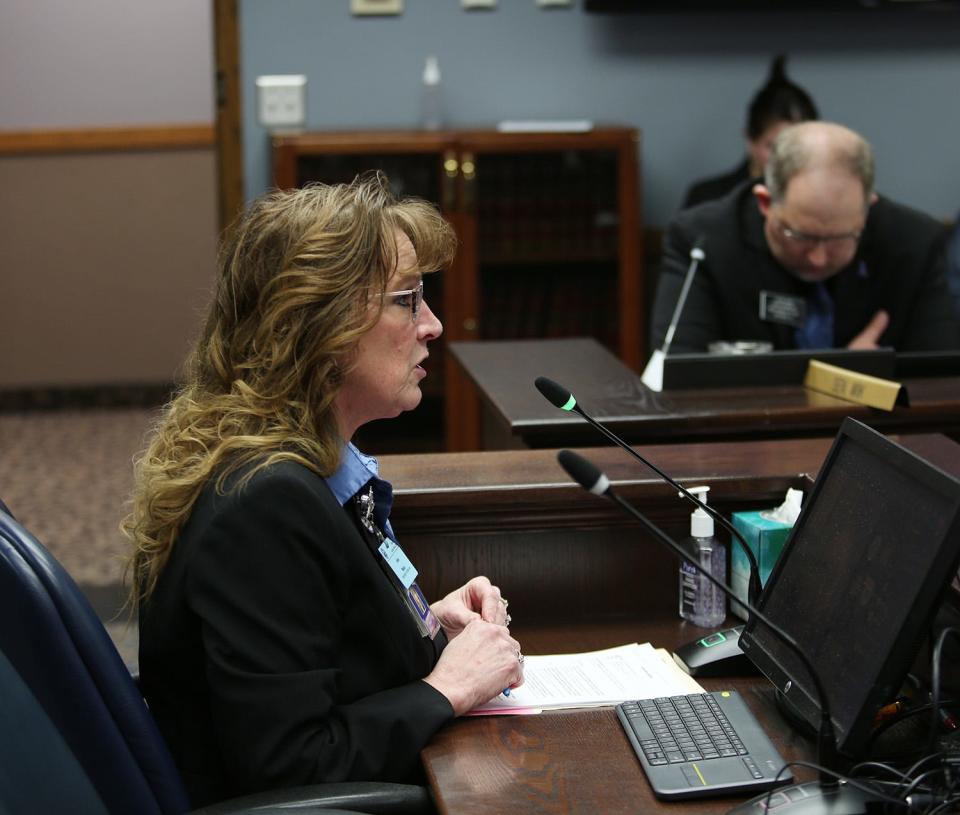Corrections secretary: New women’s prison could be filled with addicts on day one

PIERRE – The state’s new women’s prison may well be full when it opens, South Dakota’s corrections secretary said this week, a reality largely attributable to the prevalence of drug abuse in the penal population.
The new prison will free up space for addiction treatment, but the secretary said she’s concerned about the potential for more crowding in the womens’ facilities if the state doesn’t find a way to address its approach to substance abuse.
Lawmakers heard those warnings during debate on funding for the Rapid City minimum security prison, which passed the full Senate last week after a hearing in the budget-setting Joint Appropriations Committee.
Senate Bill 50 would provide additional money needed to cover the project’s $87 million price tag, after legislators set aside a portion of the money last year. Lawmakers have allocated another $567 million for a proposed new men’s prison in Lincoln County, to replace the aging penitentiary in Sioux Falls.

Few lawmakers have questioned the need. The state’s only women’s prison, located in Pierre, houses twice the number of inmates it’s designed for, packed into classrooms and a gymnasium. The state currently pays Hughes County to hold more than 70 female inmates at the county jail.
The new prison will have an addiction wing, and its existence will open up space for treatment in the current prison.
But some are concerned that a new facility for women in a state that imprisons most of its female convicts for drug use could set the state up for more costly prison projects.
“We need new facilities, because we currently have incredible overcrowding,” defense lawyer lobbyist Terra Larson said. “But I just want you guys to think about the fact that if you build it, they will fill it, and we may or may not be back here again.”
Corrections Secretary Kellie Wasko, when asked about growth projections in the female inmate population, said she’d like to see her agency collaborate with lawmakers and the Unified Judicial System on diversion programs for addicts.
“If we don’t do something to address the substance use in South Dakota, we’re going to open up a facility and we’re going to be right at capacity,” Wasko said.

History of concern over harsh drug laws
A consulting firm called the DLR Group hinted at the same issue in the report it issued on prison facilities in 2022. The report has served as the basis for discussions on new prisons in South Dakota, and it identified the women’s prison as the area of highest need.
At the time of the study, 60% of female inmates were imprisoned for drugs. The state had acknowledged, the report says at the outset, that “absent significant criminal justice reform, as the state’s population continues to grow, the prison population may surpass the operating capacities.”
In the latest annual report from the Department of Corrections, drug possession and drug ingestion mark the highest-level felony for 69% of the women imprisoned in South Dakota for a nonviolent offense. Such offenses represent 81% of all crimes committed by female inmates in the state.
It’s not the first time South Dakota’s approach to drug use has drawn scrutiny or sparked debate. Drug policy questions bubbled in the background as the Pierre facility packed more and more women into its cells, classrooms and recreation areas.
A crime trends report from February 2023, the latest available on the corrections website, shows a 66% increase in drug crimes since 2013 – the same year former Gov. Dennis Daugaard signed a sweeping criminal justice reform bill into law designed in part to hold the need for new prisons at bay.
“Absent a change in approach, South Dakota should expect to have more than 4,500 inmates by 2022,” the state’s 2012 Criminal Justice Initiative Work Group’s final report reads. It also suggests that without reform, the state would need new prisons in that same time frame.
As of January, there were 3,690 inmates incarcerated in South Dakota prisons in total, well below the feared-for figure of 4,500.
The female inmate population, however, has far surpassed the report’s projections for what might happen without reform. For women, the report said the state would reach its “female system capacity of 498 beds by 2015.”
In 2015, the female population hovered at around 400. By 2016, the figure hit nearly 500. There were 558 women in Department of Corrections custody as of January.
Warnings from defense lobby, ACLU
The 2013 reforms created a presumption of probation for drug possession. But they did not remove felony penalties for drug possession, as defense lawyers had suggested it should during task force meetings on the issue in 2012. Nor did it repeal South Dakota’s ingestion law, the only one in the nation that allows prosecutors to charge people with felony drug possession for a failed drug test.
Opponents warned the reform backers – a group that included every arm of state government as well as sheriffs, police chiefs and prosecutors – that failure to address the state’s harsh drug laws would blunt the impact of reforms.
“It is clear that the bill is missing an opportunity to save significant taxpayer dollars, reduce the burden on our prisons, and stem this tide of the low-level nonviolent offenders who occupy our prison beds,” said Tiffany Campbell, then a policy director for the American Civil Liberties Union of South Dakota.
Several attempts to repeal South Dakota’s ingestion law have come to Pierre in the intervening years, but none – including the most recent in 2023 – have landed on the governor’s desk.
Michael Winder, spokesperson for the Department of Corrections, did not respond to emails from South Dakota Searchlight requesting an interview with or statements from Secretary Wasko clarifying the kinds of steps the agency might want to take to address the state’s approach to drug crimes and its impact on prison populations.
New facilities would offer treatment
Nonviolent offenses and violent offenses alike tend to have ties to substance abuse. When speaking to legislators during committee hearings, Wasko has repeatedly stressed the importance of addiction treatment for female inmates.
“Honestly, 98% of the females in our custody have a substance use disorder,” Wasko said this week.
On the Senate floor, Sioux Falls Democrat Reynold Nesiba worried aloud that the state’s new prison could make it easier to ignore the impact of the state’s ingestion and possession laws on women struggling with addiction.
“I worry that we’re trying to arrest our way out of a public health problem,” Nesiba said.
Nesiba supported the bill, but said he did so in hopes that a new building would help inmates change their lives through rehabilitation in a way they can’t in the current cramped quarters.
“We need them to get well. We need them to take care of their families. We need them back in the workforce. We want them to be rehabilitated, and to be all that they can possibly be,” Nesiba said. “I’m hoping this new facility allows us to do that.”
The bill’s sponsor, Big Stone City Republican John Wiik, said addressing addiction and repeat offenses has to start with a new building. His arguments on the floor for SB 50 revolved around the notion that conversations about recidivism, addiction or incarceration’s impact on society at large can’t begin in earnest until the immediate need for more space is addressed.
“We certainly can’t deal with any of these issues when we have women sleeping in a gymnasium,” Wiik said.
Sen. Helene Duhamel, R-Rapid City, said she has full confidence that Wasko, a nurse by training who came to the job of secretary in South Dakota after decades in corrections in Colorado, will not drop the ball on drug treatment or rehabilitation.
“She is building, in the plan for the women’s facility in Rapid City, a whole wing dedicated to addiction treatment,” Duhamel said. “I think it’ll be a big improvement, and put corrections into a correctional facility.”
This article originally appeared on Sioux Falls Argus Leader: New women’s prison could be full upon opening, says corrections secretary

